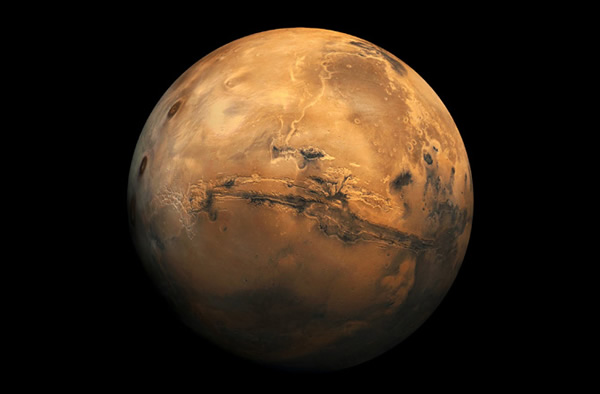Building Block for Life Found in Mars Meteorite
Building Block for Life Found in Mars Meteorite
Scientists have found a potential building block for life in a Martian meteorite recovered from Antarctica.
The Cost of Living on Mars
Relocating to Mars is expensive business!
James Porto/Taxi/Getty Images
Parts of the rock contain rich concentrations of boron, which biochemists suspect played a key role in the development of ribonucleic acid, or RNA.
“I had read how important boron could have been in the origins of life, stabilizing a part of RNA,” biologist James Stephenson, with the NASA Astrobiology Institute at the University of Hawaii told Discovery News.
RNA is a biological molecule, which scientists believe was the stepping stone for life on Earth. It, like deoxyribonucleic acid, or DNA, which evolved later, can store and transmit information to cells.
RNA is comprised of three basic components: phosphate, a ribose, which is a five-carbon sugar, and a nucleobase. Both phosphates and nucleobases have been found in meteorites previously. Ribose has never been found beyond Earth.
“Of the three parts that make RNA, the ribose is the tricky part. We haven’t been able to explain how it could form naturally,” Stephenson said.
In 2004, chemist Steven Benner, with the Foundation for Applied Molecular Evolution in Gainesville, Fla., proposed that ribose’s secret helper was boron.
“If one thinks that life originated with RNA that formed pre-biotically, we know of no other way of getting ribose in adequate amounts other than to use borate,” Benner wrote in an email to Discovery News.
“It’s the unique size of the boron which is able to stabilize the ribose ring structure. No other element has been shown to have that effect,” Stephenson added.
After reading Benner's paper, Stephenson asked a geologist colleague if any of the Mars meteorites recovered on Earth had been analyzed for boron. They hadn’t, so Stephenson arranged a study.
The team hit the boron lottery in the final hours of their assigned time on a highly specialized ion microprobe at the University of Hawaii.
“We had four days on this very expensive machine and the first 3.5 days we hadn’t found any reasonable amounts of boron. We tried different meteorites and we tried different places in this Mars meteorite. It was only in the last hours that suddenly the boron concentrations jumped up from 2- to 3 parts per million up to 200 parts per million,” Stephenson said.
“It was a surprise for all of us. We were basically thinking of giving up. We’d been working like 15-hour days on this machine and not finding anything and we were ready to pack up and leave when we got this result, so then we carried on through the night," he said.
The scientists next plan to test if an Earth clay with the same amount and configuration of boron found in the meteorite can actually stabilize ribose.
The research is published in PLOS One.(Jun 17, 2013 07:00 AM ET // by Irene Klotz)












